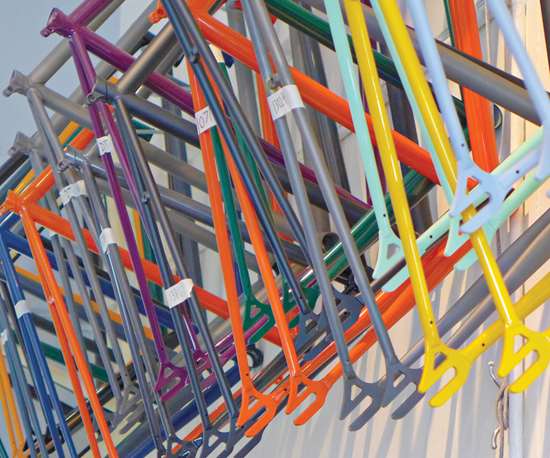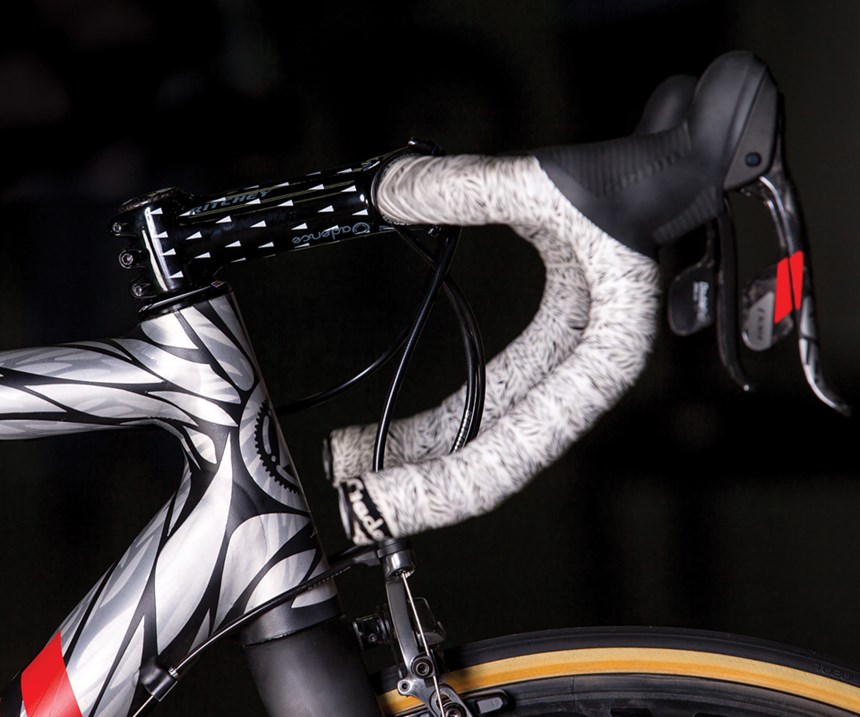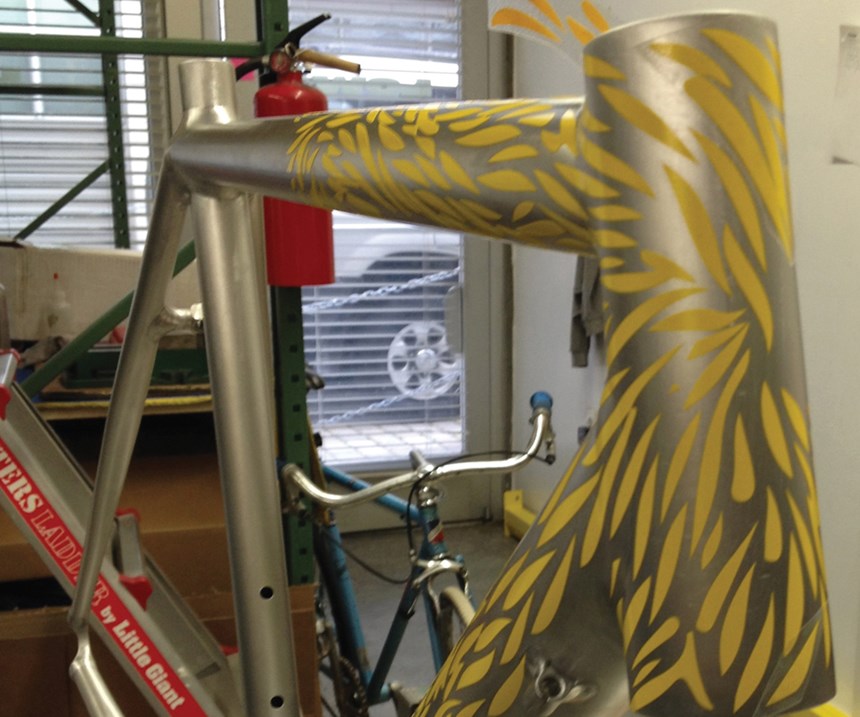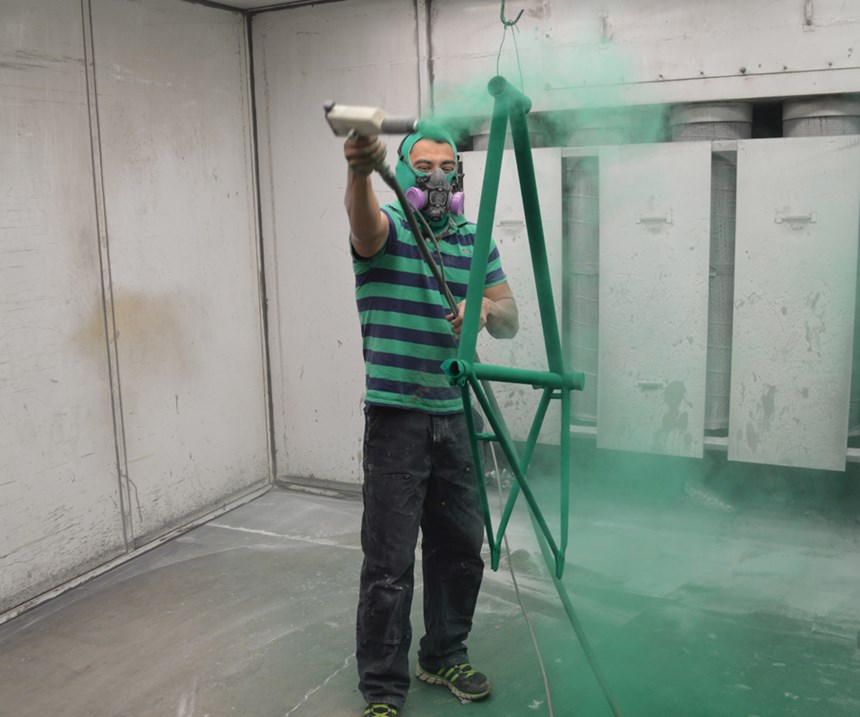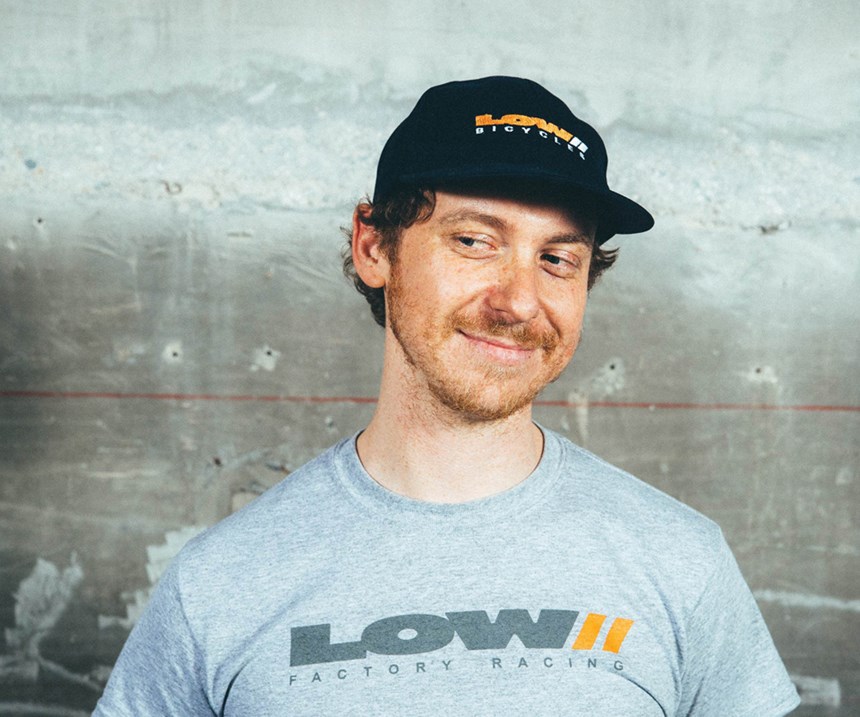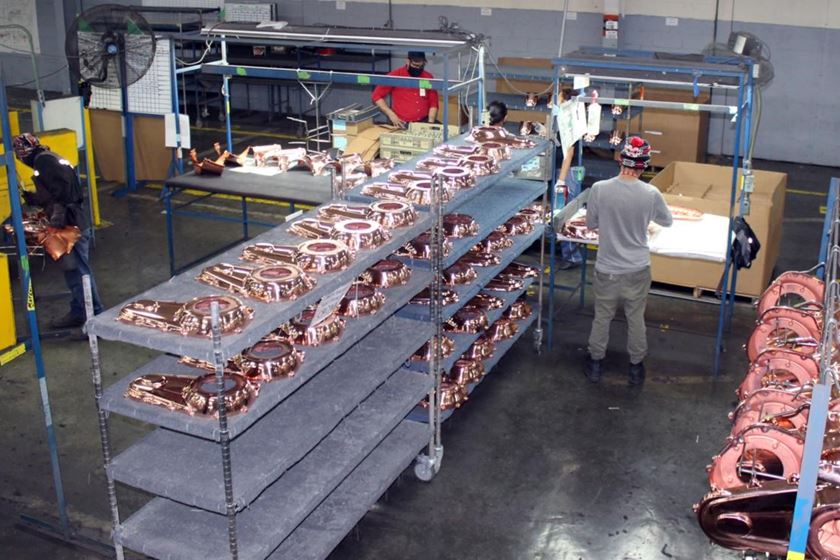Life Cycle: Powder Coat Turns Bikes into Fine-Tuned Machines
Two San Francisco bike makers turn to powder coating to finish their custom products.
#curing #masking
Americans still love to ride their bicycles, something they might have picked up as a kid growing up in suburbia or on a sidewalk in a big city.
But manufacturers don’t necessarily like to make their bikes here in the U.S.; a 2015 report by the National Bicycle Dealers Association says just 2.5 percent of the almost 13 million bikes sold in the U.S. were made here.
Featured Content
In 1990, just over 5 million bikes were manufactured by U.S. workers, according to the International Bike Association. In 2015, that number dipped to almost 200,000.
But Jefferson McCarley and Andrew Low are out to do something about that, even if it means making the two-wheel contraptions by hand.
McCarley is the general manager of Mission Bicycle Co. in San Francisco, makers of custom bikes for enthusiasts who like to peddle their way around town instead of driving or Ubering.
“Our bikes are made of steel,” he says. “And they last a lifetime.”
Low is the namesake owner of Low Bicycles—also located in San Francisco—which makes high-quality, aluminum bicycle racing frames by hand in a manufacturing shop less than 500 square feet in size.
“I’m proud of the things we make,” says Low. “It’s great quality; you can’t beat great quality.”
Premium, Custom-Made Bikes
Both Mission and Low bikes also have something in common besides the price—Low’s bikes can price as high as $6,000 for a premium racer—in that both companies finish their products with a powder coating process that distinguishes their bikes by the style and beauty of hand-crafted machinery.
“I would prefer a wet process because of the quality of the finish, but I like how our bikes look coming out of the powder coater,” Low says. “I’m proud of what we’ve done, and the finish we have on it.”
Mission sells its bicycles to people who ride them to work, school or the neighborhood grocery store, McCarley says, meaning they are meant to be used every day, even if they cost around $1,000 each.
“They basically replace cars in some households, so the price is definitely in line for everyday use,” he says. “Here in San Francisco and other major cities where parking can be so expensive, having a bike is such a great alternative and actually much cheaper when you look at all the costs.”
Mission lets its buyers design their bike on its website, right down to the color of the powder coating. The frames are made overseas, but it is built in San Francisco from the frame up.
“We want to give our customers a true personalized experience, and color is such a big part of that,” McCarley says. “We used to sandblast and apply a liquid paint, but powder coating is just way more durable, and these bikes are going to be used every day, so the finish needs to last.”
Color Selection, Finishing Quality
Mission started producing bikes in 2009, and McCarley says that the wide variety of colors available through powder coating builds the excitement for the owners as they construct their bikes on the website.
“The color selection is great, but more importantly, we let them know that the color won’t fade with the powder coating, and it will pretty much stay vibrant,” he says. “The coating quality is outstanding.”
Not all customers want to spend the time designing the bike, which includes picking out the frames, rims, seat, grips and other components that make the machine work, on top of the color scheme. McCarley says his company has several bike designs already put together that customers pick from an online showroom, and Mission will build the bike exactly like it.
Originally, Mission offered up a swatch book with over 250 colors for its customers to choose from, but McCarley says it was a bit too much for them to consume.
“It was overwhelming of the senses,” he says. “It was counterproductive because it was too much. Over time, we saw what colors our customers really loved, and we narrowed it down to 10 or 12, and that is where we decided to start. If someone sees a red, but wants it darker, then we can work with our coater to get them what they want.”
West Coast Powder Coating
Mission and Low both use West Coast Powder Coating, located just south of San Francisco. Owner A.J. Costa runs a 30,000-square-foot facility that features sandblasting and a powder coating line that has serviced the Bay Areas’ commercial, residential, marine, architectural and industrial clients since 2000.
McCarley says he enjoys a great relationship with Costa because the shop owner also expects a flawless high-quality finish, and Mission—which sells about 500 bikes a year—knows that West Coast Powder Coating will give it to them.
“Our customers just expect the most pristine finish because of what they are paying for the bike,” he says. “We usually always get that from West Coast, but they work with us on something if it somehow has a little spec or blemish. They also want to get it perfect, and we both try very hard to do that. It’s a great relationship to have with them.”
West Coast Powder Coating also maintains an array of standard frames from Mission at its coating facility, so it can easily pull a frame out of the box and have it powder coated to the customer spec. McCarley says that has been a huge help to his business because he is no longer paying to warehouse his inventory of frames; in return Mission gives West Coast Powder Coating all of its business.
And because the companies are located in eco-friendly California—and Mission is pushing the concept of not owning a car—once the bikes are coated and cured, McCarley calls an Uber to deliver the frames to his shop.
“It’s good for the environment, and the Uber drivers like it, too,” he says. “They have boxes in the backseat, and not someone yammering about things and talking their ears off.”
Performance Racing Bikes
On the other end of the bike coating spectrum is Low Bicycles, which offers a more complex finish to its customers.
Finishes include layers of masking and special effects in the powder coat finish of its racing bikes.
Some of the coatings are done over special heat-resistant decals that Low applies to the frames. The process involves starting with a base coat, then an application of the decals, followed by a topcoat finish that can get fairly complex.
“We want our finishes to look as flat as possible, which is a tough thing to do sometimes with powder coating,” Low says. “The less flat clear coating we put on, the better. We push our coater to go right up to the line so we don’t get a sheen, and they do a great job for us.”
Low bikes are made from aluminum to give it a racing edge and to cut down on weight. While some other bikes are built from a high-end carbon fiber frame, Low’s bikes often achieve just as much aerodynamic efficiency, if not more.
The Low frames are prepped and masked at its shop, including metal cleaning and then shipped to West Coast Powder Coating in sealed dust-free bags, where the spraying and curing occurs.
Heat-Resistant Masking Decals
Low uses Mylar-like materials for the decals and masking made by SSS Ink in North Carolina. It’s owner, Gary Prange, is known throughout the handmade bicycle industry as the leader in decals that can then be powder coated.
“They are one of the few in the country that can make these types of decals that can go through the powder coating spray booth and be cured,” Low says. “We start with a burnishing technique to polish the raw aluminum in different directions to get a cross-grain look, then we use regular vinyl to mask in whatever pattern we want to have in the finish.”
From there, the frames are sent to West Coast Powder Coating for the finish, and then brought back to Low’s for the Mylar-type decals that are placed on the downtubes and other parts of the frame.
Most of Low’s bikes start at around $2,400 and go up based on the racer’s specifications, and some can get as high as $6,000 to $8,000.
“Most of the bikes we sell are for racers, but we have some who want them for joyriding,” Low says. “It isn’t your average everyday mode of transportation. There is a performance need, so these are for the serious cyclist.”
Even though the bikes are handmade, the products are not custom-built, for the most part. Low says they have several set products that are already engineered for racing, and customers can buy them and make minor modifications later of they want.
“We have a stock color for most of our bikes,” he says. “If they want something more elaborate of a different color scheme, we can make them for them, but there are some added costs.”
Proper Adhesion
One problem is that Low has to test each unique color scheme with the decals to make sure they react the same as far as adhesion is concerned. Some powders have a sublimation dye in them, he says, which can affect how well it allows adhesion glue to stick to the finish.
“The powder colors that have red pigments in them tend to be trickier,” Low says. “We test to make sure the decals will stick, so there is some additional prep work involved.”
Both companies—Mission and Low—also come with another unique feature: having been assembled in the U.S. by hand.
“It’s something we take great pride in, not only because it is made here in this country, but because it is so unique,” McCarley says. “We know that for a lot of our customers, this is their only means of transportation, so it is the first thing they use in the morning when they go to work, and the last thing they use when they come home at night. It is a very personal product for them, and we understand that. It’s what makes what we do all that more special.”
For information, visit lowbicycles.com, missionbicycle.com and powdercoatingsanfrancisco.com.
Originally published in the June 2017 issue.
RELATED CONTENT
-
Touch-up Options for Powder Coated Parts
Is it true that powder coating cannot be touched up? Powder coating expert Rodger Talbert offers options for powder coating touch-ups.
-
Curing Oven Basics
Simply heating up the substrate does not cure the coating. There are many variables to consider when choosing the best cure oven for your application...
-
Understanding Infrared Curing
Infrared cure is gaining increased attention from coaters as a result of shorter cure cycles and the possibility of smaller floor space requirements when compared to convection oven curing.


